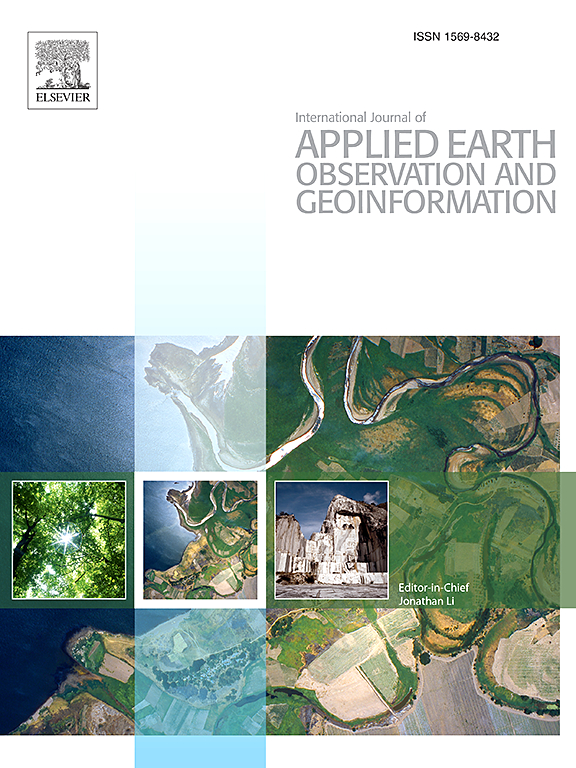Empirical methods to determine surface air temperature from satellite-retrieved data
IF 7.6
Q1 REMOTE SENSING
International journal of applied earth observation and geoinformation : ITC journal
Pub Date : 2025-02-01
DOI:10.1016/j.jag.2025.104380
引用次数: 0
Abstract
Surface air temperature (SAT) is an essential climate variable (ECV). Models based on remote sensing data allow us to study SAT, without the need for a large network of meteorological stations. Therefore, it allows monitoring the climate in remote and extensive areas. Niclos et al. (2014) proposed parametric equations for the SAT retrieval over the Spanish Mediterranean basins. In this study, we evaluated those equations, but in a larger area and period of study. In addition, we proposed several linear regression models and nonlinear models based on decision tree methods, non-parametric methods and neuronal networks. These models relate SAT to land surface temperature, vegetation indexes and albedo from MODIS data. Moreover, meteorological reanalysis data, from ERA5-Land database, and geographical parameters were used. The accuracy of each model was evaluated against data from meteorological stations operated by AEMET in the Spanish Mediterranean basins, during the period 2021–2022. The equations of Niclos et al. (2014) obtained a robust root mean square error (RRMSE) of 3.1 K at daytime and 1.9 K at nighttime. For the linear regression models, the RRMSE decreased to 2.3 K (1.5 K) at daytime (nighttime). Finally, the nonlinear methods, in particular XGBoost model, showed an RRMSE of 1.5 K for daytime and 1.0 K at nighttime. Therefore, the comparison between methods showed that nonlinear models, in particular those based on decision tree methods, offered the best results in SAT retrieval in our study.
求助全文
约1分钟内获得全文
求助全文
来源期刊

International journal of applied earth observation and geoinformation : ITC journal
Global and Planetary Change, Management, Monitoring, Policy and Law, Earth-Surface Processes, Computers in Earth Sciences
CiteScore
12.00
自引率
0.00%
发文量
0
审稿时长
77 days
期刊介绍:
The International Journal of Applied Earth Observation and Geoinformation publishes original papers that utilize earth observation data for natural resource and environmental inventory and management. These data primarily originate from remote sensing platforms, including satellites and aircraft, supplemented by surface and subsurface measurements. Addressing natural resources such as forests, agricultural land, soils, and water, as well as environmental concerns like biodiversity, land degradation, and hazards, the journal explores conceptual and data-driven approaches. It covers geoinformation themes like capturing, databasing, visualization, interpretation, data quality, and spatial uncertainty.
 求助内容:
求助内容: 应助结果提醒方式:
应助结果提醒方式:


